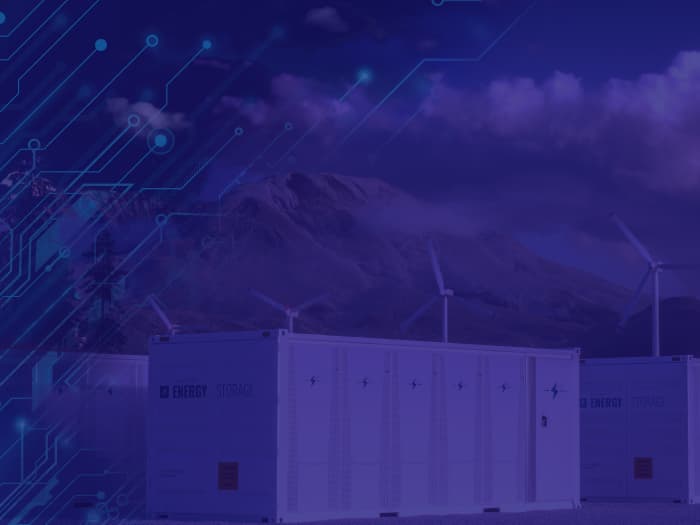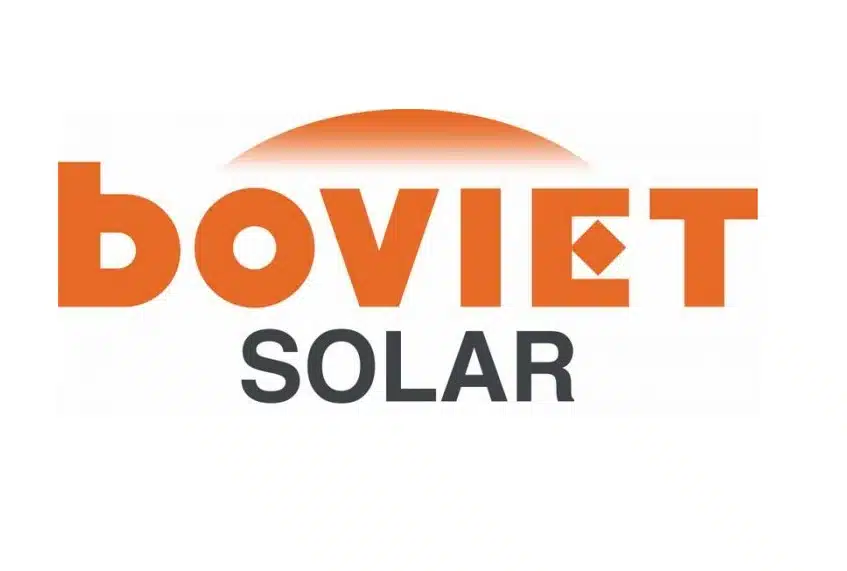Q&A: solar module prices, FEOC risk, and the next round of trade turbulence with Anza CEO Mike Hall
With tariffs shifting and FEOC rules reshaping supply chains, Mike Hall discusses how Anza’s platform uses live data and AI forecasting to give solar buyers an edge

Module prices across the U.S. distributed-generation market climbed 3.7% this summer, returning to May’s $0.28/W peak, according to Anza’s latest Q3 2025 Solar Module Pricing Insights Report. The uptick followed a rush of procurement activity ahead of the September 2 deadline for using the 5% safe harbor method on projects over 1.5 MW — a key date that pushed many developers to lock in tax credit eligibility and hedge against tariff uncertainty.
FEOC-noncompliant* module prices jumped 9.2% from June to August, compared to a 4.9% increase for FEOC-compliant products. The narrowing spread between PERC and TOPCon technologies, along with AD/CVD pressure in Southeast Asia and India, continued to define buying behavior. U.S. modules with domestic cell content remained highest at $0.46/W, while Southeast Asia and India averaged $0.305/W.
* FEOC is a government acronym for a “foreign entity of concern,” meaning for a company or organization that is owned by, controlled by, or subject to the direction of a government that’s considered a national security risk to the U.S., which mainly means China for our purposes.
The report suggests that the late-summer lift was largely a matter of policy timing rather than underlying supply or demand. Developers seeking to secure credits before the cutoff leaned on established suppliers and preexisting relationships — a pattern that aligns with a broader theme of risk management across the solar supply chain.
To better understand how these trends are playing out in real time, Solar Builder caught up with Anza co-founder and CEO Mike Hall at RE+ 2025. In this conversation, Hall discusses the ripple effects of FEOC, customs enforcement, and tariff uncertainty — and how Anza’s platform is giving procurement teams a clearer picture of what’s coming next.
Procurement volumes after the safe-harbor surge
Crowell: What kind of volumes are you seeing now, given the environment and the changes in construction start and the July 4 deadline next year?
Hall: We saw a flood ahead of July 4. Then we saw a bigger surge just before September 5. We are now seeing most buyers return to more normal procurement patterns. Multiple years of solar projects have safe harbored 4-years of ITC eligibility by commencing construction this year. We believe there are well over 100 GW of projects that will need to procure modules between ’26 and ’28.
While modules generally can no longer be used to safe harbor the ITC, there are still compelling reasons for IPPs and developers to accelerate procurements and buy this year. We see many companies trying to get ahead of potential price increases from the potential Section 232 tariffs on polysilicon and derivative products. There are also additional risks associated with ongoing AD/CVD investigations, as well as additional tariffs from the Trump administration.
Storage market: steady but cautious
Crowell: What’s the storage volume like? Is it tied to the spikes we’ve been talking about?
Hall: We have not yet seen significant acceleration of battery purchases. Most companies have been focused on commencing construction with other means, and trying to get ahead of FEOC implementation at the end of the year. We do believe there are economic reasons for some developers to accelerate storage procurements in order to get out ahead of price increases associated with AD/CVD on active anode and an increase in the Section 301 tariffs at the end of the year.
That being said, warehousing batteries is a lot more painful than warehousing modules. You’ve got degradation issues, you’ve got conditioning issues. You’ve got to be a lot more careful about your environmental conditions and handling.
Crowell: In my mind, storage would be less of a commodity compared to modules, in that you’d really want a certain brand.
Hall: Yes, I would say it’s less commoditized than module products. There’s more of a spread in product configuration, technical specifications, capabilities, and vendors. But companies are still price sensitive.
It’s not quite the same as when you’re buying solar. Generally in solar, the customer orientation is, I want to buy the cheapest bankable product. With storage, customers are more risk focused, and the decision is more complex. In addition with storage the vendor is critical part of the execution and operation of the project, so buyers are much more concerned with the vendors track record and non-manufacturing capabilities.
Navigating tariffs, duties, and market risk
Crowell: How are you navigating all of these choppy trade waters – tariffs, duties and now the latest monkey wrench in FEOC – to stand by real-time product information module buyers can rely on?
Hall: This is actually our time to shine because what we do is stay very close to the vendors and demand a lot of information from them, and then make that available to the industry. It’s not just, what does it cost per watt – it’s where is this stuff made? What is the current tariff and duty situation, and what is their exposure to the next round of tariffs and duties? And how am I going to be protected if I contract with this company?
We’re getting a lot of inquiries about FEOC. We are collecting data around FEOC scoring using the domestic content tables, and we’ve assigned FEOC risk ratings based on vendor provided data. We have a 60 point questionnaire that we’re using to assign FEOC risk ratings.
That being said, I think most large-scale projects that will be constructed between 2026 and 2028 will be safe-harbored prior to year-end and therefore won’t actually have FEOC concerns. Broadly, the industry is maybe over-rotating to respond to FEOC for solar – except for smaller, behind-the-meter residential or maybe 1 and 2 MW projects that can be done quicker. I’m not sure how big a window there is for FEOC compliance.
Storage is a little different, because the ITC is so long, and I don’t think we’re safe-harboring all the projects between now and 2032. I do think there are going to be FEOC compliance issues that will endure in storage.
We are hearing some customers going above and beyond FEOC requirements that have sensitivity to Chinese supply – in storage more so – because of the software component and concerns around future federal law, and also current state-level laws, like those in Texas that make it difficult to use software from Chinese companies.
These storage systems all have software components – the battery management system, the energy management system. In theory, there’s work you can do to separate the hardware from the software. But how hard is it? And are the authorities who are placing these restrictions satisfied with that?
Yeah. So storage is a bigger issue. It’s also has bigger safety issues. So maybe there are more concerns around Chinese software being the gate to safety.
Crowell: What about Customs detentions? It seems like those are ramping up again.
Hall: They were up, then they went down. Now they’re up a little bit. There’s no silver bullet for assessing detection, but there are things we do to try and predict whether a vendor and a product is more or less likely to be detained. Some of the things we look at when assessing detainment risk include the vendor’s supply chain, track record in getting detailed product through CBP, and what buyer protections the seller is willing to provide.
Crowell: Right. You’re not going to necessarily know the whims of government enforcement, but with supply chain transparency, you have a good idea of whether or not they ultimately comply and will be released.
Hall: Yeah. And then we do try and track which suppliers have been detained, and more importantly, which suppliers have gotten through detainment. Because once they’ve gotten through, then, presumably, they have the documentation that CBP is going to need to release their next product – as long as they’re not changing their supply chain. That’s something our subscribers can actually see: the UFLPA risk. We have a risk rating.
Beyond FEOC: more tariff and duty turbulence
Crowell: Beyond FEOC and all the things we’re talking about, are there storylines or trends that you’d like to start getting ahead of, or warning people about on the procurement side?
Hall: There just seems to be this continuous barrage of taxes associated with imports – both tariffs and duties. Most of the industry has been so focused on safe harbor that they think they don’t need to worry. But they’re not really thinking about the financial risk of the Section 232 tariff on imported polysilicon and derivatives, or the next AD/CVD case, or potential shortages in some of these new countries of origin, like in North Africa and the Middle East.
Unfortunately, there’s even more risk that companies need to hedge against. The good thing is, it’s not necessarily a binary risk, but it could impact their financials.
It’s a very weird situation where the solar module market globally is structurally oversupplied. There’s too much product. But because of all the trade policy in the U.S., it certainly looks like there are more things that are going to push prices up than pull them down – and it’s not because of the fundamental global supply and demand.
Platform upgrades: forecasting and FEOC risk ratings
Crowell: Let’s dive into the updates you’ve made to the Anza platform. How do they help procurement teams in this current moment, beyond what you were already doing?
Hall: One thing that we’ve put into the platform that customers are asking for is a longer-term forecast for module prices. As far as we know, ours is the only one that’s based on large volumes of real price quotes, and not price surveys or component cost buildups.
We take all our historic price quotes, and then our machine learning algorithm creates a long-term price forecast off of it. Then we overlay specific trade and policy risks that we see in the market. We show our subscribers how our algorithm has performed historically, so they can judge for themselves how best to utilize it.
We’re also adding the FEOC data to both the solar and the storage side of the platform.
Another feature we’re really excited about is the price quote predictor. We’ve created an algorithm to look at the list price, but also all the historic data and current data we have on price quotes that are directly from a specific vendor to a specific customer. We can bring those together and predict what range of quotes a buyer is likely to get at any given time from basically any vendor in the market. It’s very powerful as users get better data than they would likely get from the first stage of an RFP in just a few seconds. In late-stage procurements it can help accelerate price negotiations between buyers and sellers.





Comments are closed here.